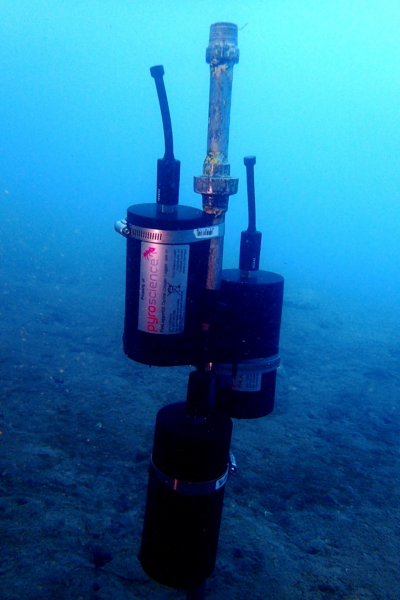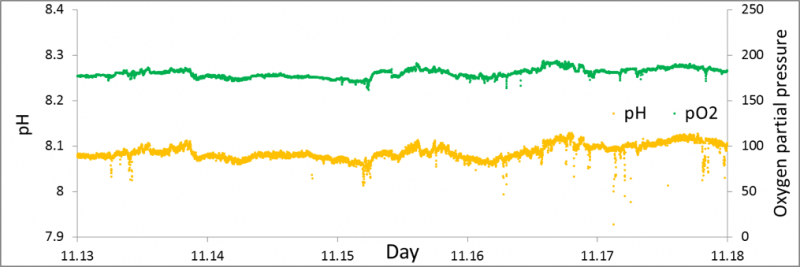FireLogger Optodes successfully used in shallow, coastal Antarctic waters

Potter Cove (Image courtesy of Ralf Hoffman)
During the KGI 16/17-Expedition of Ralf Hoffmann, Moritz Holtappels, Elisa Merz and Christopher Nowak to the Potter Cove (King George Island, Antarctic Peninsula) three FireLogger Optodes were deployed for a long-term test. The optode loggers were developed by Pyro Science GmbH within the SensorOCEAN project in addition to the Modbus devices for stand-alone tests and demonstration missions. They were equipped with sensor caps to measure oxygen, carbon dioxide and pH, developed by TU Graz. Additionally, each of the loggers holds a temperature sensor. The sensors were calibrated in the Dallmann Laboratory, which is a German annex of the argentine Carlini Station and run by the Alfred Wegener Institute for Polar and Marine Science (AWI). The loggers were deployed at 9 m depth, roughly 0.5 m above the seafloor at 62°13’31.9’’S and 058°39’36.6’’W from 9th Nov-12th Dec 2016. Thus, the above mentioned parameters were measured over the Antarctic spring season with a one-minute resolution.

FireLogger Optodes on the seafloor. The three logger units measure oxygen, pH and CO2, respectively, and temperature. (Image courtesy of Christopher Nowak)
All loggers remained sealed and measured over the entire duration. The signal of the oxygen sensor was very stable and recorded a continuous oxygen time series of the bottom water over the entire duration.This gave insights into the daily and weekly variation of the bottom water oxygen concentration and therefore useful background information for other experiments that were performed during the expedition. The signal of the pH sensor was stable over 17 days and small scale variations correlated very well with the oxygen signal. After 17 days the signal started to drift, probably due to mechanical damage to the sensor foil. The measurement of the partial pressure of CO2 in the water unfortunately failed as the sensor signal immediately drifted. An evaluation of the data revealed that the raw-signal was stable over time. This indicates that a mistake probably occurred during the complex calibration procedure. Additionally, temperature sensors were installed on each of the three sensors units and ran simultaneously during the entire measuring period showing only minor differentiations between each other.

Subset of measured oxygen (green) and pH (orange) values.
The first long-term usage of the FireLogger Optodes in shallow, coastal Antarctic waters has to be assessed as very successful:
- It proved that the hardware, e.g. power supply or space for data storage, enables the device as a suitable tool for monitoring tasks with a high temporal resolution within coastal areas.
- Longer deployments will be possible, as the FireLogger Optodes still held power and data storage space after their recovery.
- The oxygen sensor proved its high TRL and showed great performance under very cold and tough Antarctic conditions.
- The pH sensor performed very well and produced reliable data.
- The test of the CO2 sensor gave the first and important insight into its performance and will guide the development and improvement of the sensor and the calibration procedure.
- Additionally, the logger software proved its intuitive manageability and showed only minor flaws.













